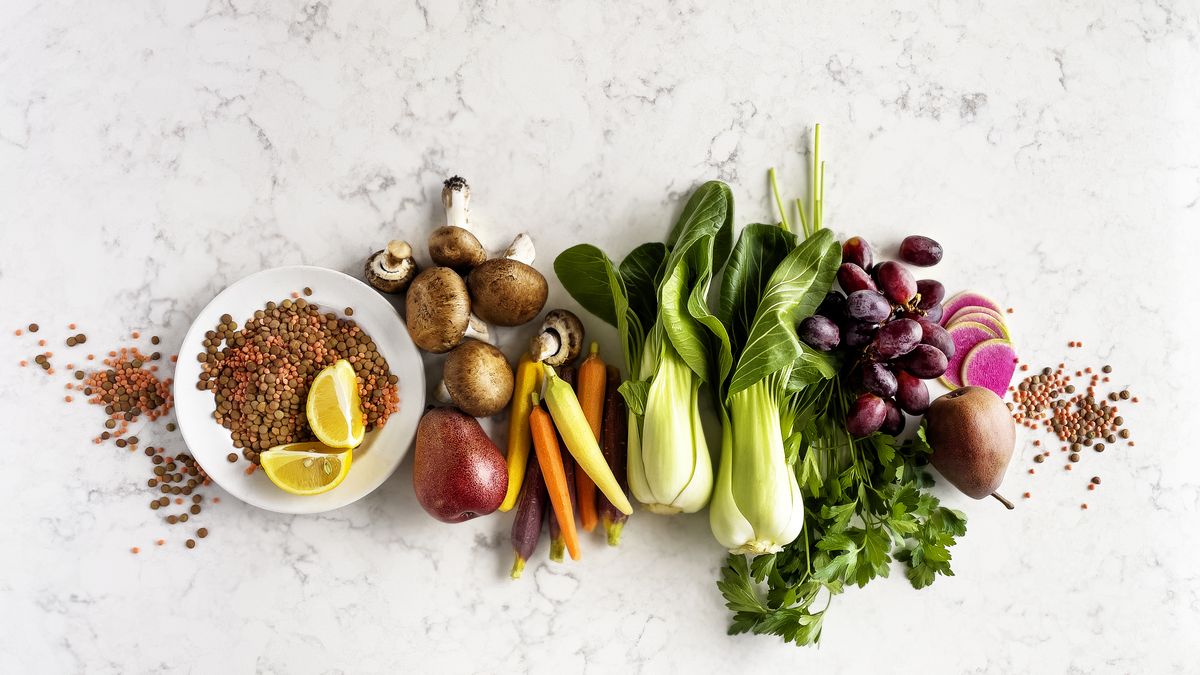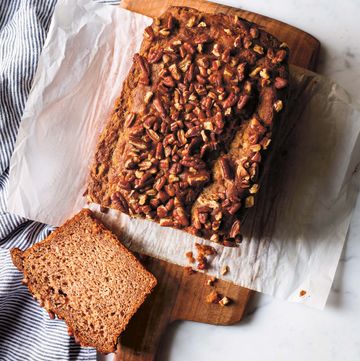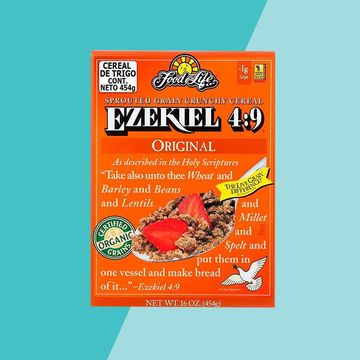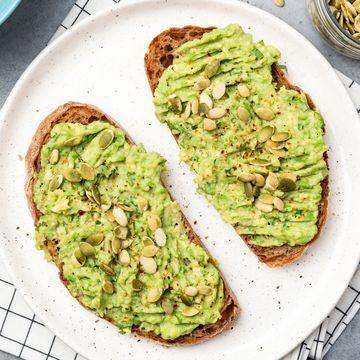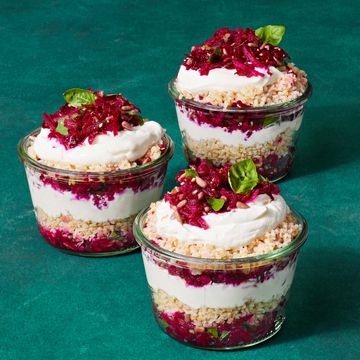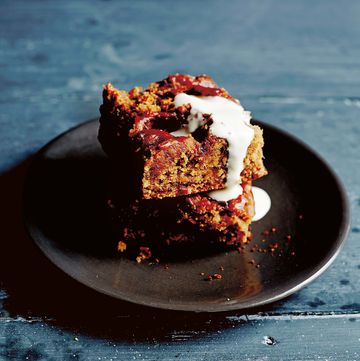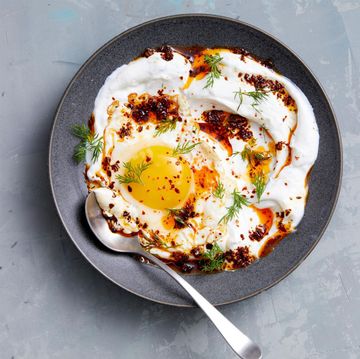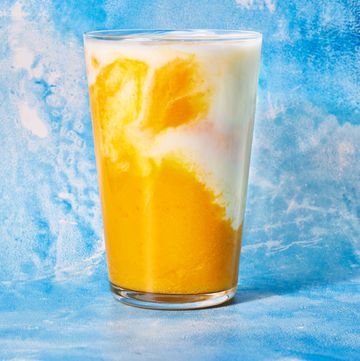Whether you’re looking to lose weight or simply add more vegetables into your diet without increasing your overall intake, packing your meals with low-calorie foods can help you achieve your nutrition and weight goals. And low-calorie vegetables bring a ton to the plate. We tapped experts to break down their all-time favorite low-calorie vegetables, and ways to bulk out those meals so they’re extra filling and nutritious.
Why add low-calorie vegetables to your meals?
Foods like candy bars contain very little nutritional value and don’t give a lot for the number of calories. In comparison, many vegetables are nutrient-dense and include fiber and water to help keep us fuller longer for very few calories, explains Lindsey Palmer, M.B.A., M.S., R.D.N., vice president of nutrition and industry relations for Chartwells K12. This is especially great with low-calorie vegetables because you can eat larger quantities of them compared to less nutrient-dense foods, like those candy bars. These low-calorie vegetables bring a ton of fiber to the plate, which helps us feel satiated, curb cravings, and keep blood sugar levels steady, she adds.
Beyond fiber, vegetables are also packed with a ton of vitamins and minerals like vitamin C, vitamin A, folate, and potassium, adds Michelle Cardel, Ph.D., M.S., R.D., senior director of clinical research and nutrition at WeightWatchers. This array of nutrients can help the body stay healthy, fight infections, and so much more.
How to eat low-calorie vegetables
Because vegetables alone often won’t give your body the full spectrum of nutrients it needs, always pair them with protein, fiber, and healthy fat on your plate, says Jenny Shea Rawn M.S., M.P.H., R.D., registered dietitian, food photographer, food blogger, and a partner of Little Leaf Farms. This can help ensure you’ll be satiated after a meal and you’ll get a wide array of nutrients. And of course, include vegetables as much as possible, she notes.
Additionally, Cardel suggests looking beyond the calories of the plate and ensuring you’re getting a nutritious meal. Calories can be a goal, but be sure to also consider fiber, protein, and unsaturated fats as positive aspects and keep added sugars and saturated fats in check.
Lastly, Rawn encourages always eating foods that taste good, make you feel good, and provide energy to fuel you. She suggests combining different textures, colors, and flavors to make the meal as enjoyable as possible, so you’ll get excited about eating your vegetables every time.
Now, here are our expert’s favorite low-calorie vegetables. And if you’re really on the low-calorie train, try our best low-calorie meals, low-calorie snacks, low-calorie breakfasts, and low-calorie salads.
Best Low-Calorie Vegetables
Lettuce
Every variety of lettuce will vary in calories slightly, but they’re going to pack a nutritional punch. For example, about 3.5 ounces of Romaine lettuce has 20 calories. Rawn especially loves baby crisp green leaf lettuce which is high in fiber, potassium, iron, and calcium. She loves it in salads, sandwiches, and lettuce wraps because it’s extra crispy.
Spinach
About 3.5 ounces of spinach has just 27 calories. Cardel says spinach is high in vitamin A to support skin health and vitamin K to support healthy bones. She loves how versatile greens are and suggests adding them to pasta, sauces, soups, and smoothies.
Seaweed
This often-forgotten sea vegetable provides freshness and umami to dishes, Rawn says. It’s loaded with iodine and is great frozen in smoothies, salads, and seafood dishes, she adds. Plus, a cup of seaweed has just 45 calories.
Kale
Though all types of kale are healthy and delicious, Rawn’s favorite is red Russian kale which she uses in salads or on pizza for the high content of fiber, vitamin K, vitamin C, vitamin A, calcium, and potassium. One cup of raw kale is just 9 calories.
Cabbage
Cabbage has a ton of health benefits and clocks in at just 25 calories per cup. Rawn says both red and green cabbage are staples in her home for their vitamin K and vitamin C. She loves cabbage roasted simply or shredded raw.
Cucumber
Cucumbers are over 90% water, making them ultra-hydrating, naturally lower in calories, and higher in fiber to stay fuller longer, Cardel says. A cup of cucumber slices has about 16 calories.
Eggplant
Though technically a fruit, eggplant is typically treated like a vegetable so it deserves a place on this list. Cardel says it’s high in fiber, can help with blood sugar control, and reduce the risk of heart disease. She likes it baked, roasted, grilled, sauteed, or as an eggplant parmesan. A cup of cubed eggplant has about 20 calories.
Broccoli and Broccolini
For a hefty amount of fiber, vitamin K, vitamin A, and vitamin C, Rawn says broccoli is a favorite pick. Similarly, Cardel loves broccolini, which boasts calcium and magnesium to help regulate blood pressure, plus fiber to encourage a healthy gut. A cup of broccoli provides 30 calories.
Beets
Palmer says she finds beets take on seasonings, like salt and acid, really well and she loves them in salads with (also low-cal) cucumbers and tomatoes. A half cup of beet slices has just 37 calories.
Carrots
About 3.5 ounces of carrots bring just 48 calories to the table. “Carrots are rich in beta carotene, an antioxidant that changes into Vitamin A and supports eye health and cognitive function,” Cardel says. She snacks on them raw with yogurt dip or for natural sweetness in desserts and side dishes.
Zucchini
“One of my favorite low-calorie vegetables is zucchini,” Cardel says. “Not only is it delicious, and full of fiber and potassium which help regulate your digestive system and blood pressure, but you can add zucchini to almost any recipe, especially in the summer and fall when it’s in peak season.” She loves sneaking it into desserts for added nutrients, like chocolate-zucchini bread mini muffins. After all, a medium zucchini only has 33 calories.
Mushrooms
A great source of B vitamins, fiber, antioxidants, and anti-inflammatory properties, Cardel loves mushrooms as a substitute for meat, roasted, or mixed into an omelet. Rawn agrees, noting mushrooms also provide copper, potassium, and vitamin D. Though varieties of mushrooms vary in exact calories, 3.5 ounces of portabella mushrooms have just 32 calories.
Winter Squash
Orange vegetables like winter squash are high in vitamin A, which can help with eye health, and have more potassium than a banana, Palmer says. She loves them as a base for soups and will often reach for frozen options to cut down on prep time and cost. Every squash has a different calorie count, but a cup of acorn squash has about 56 calories.

Arielle Weg is the associate editor at Prevention and loves to share her favorite wellness and nutrition obsessions. She previously managed content at The Vitamin Shoppe, and her work has also appeared in Women’s Health, Men’s Health, Cooking Light, MyRecipes, and more. You can usually find her taking an online workout class or making a mess in the kitchen, creating something delicious she found in her cookbook collection or saved on Instagram.
